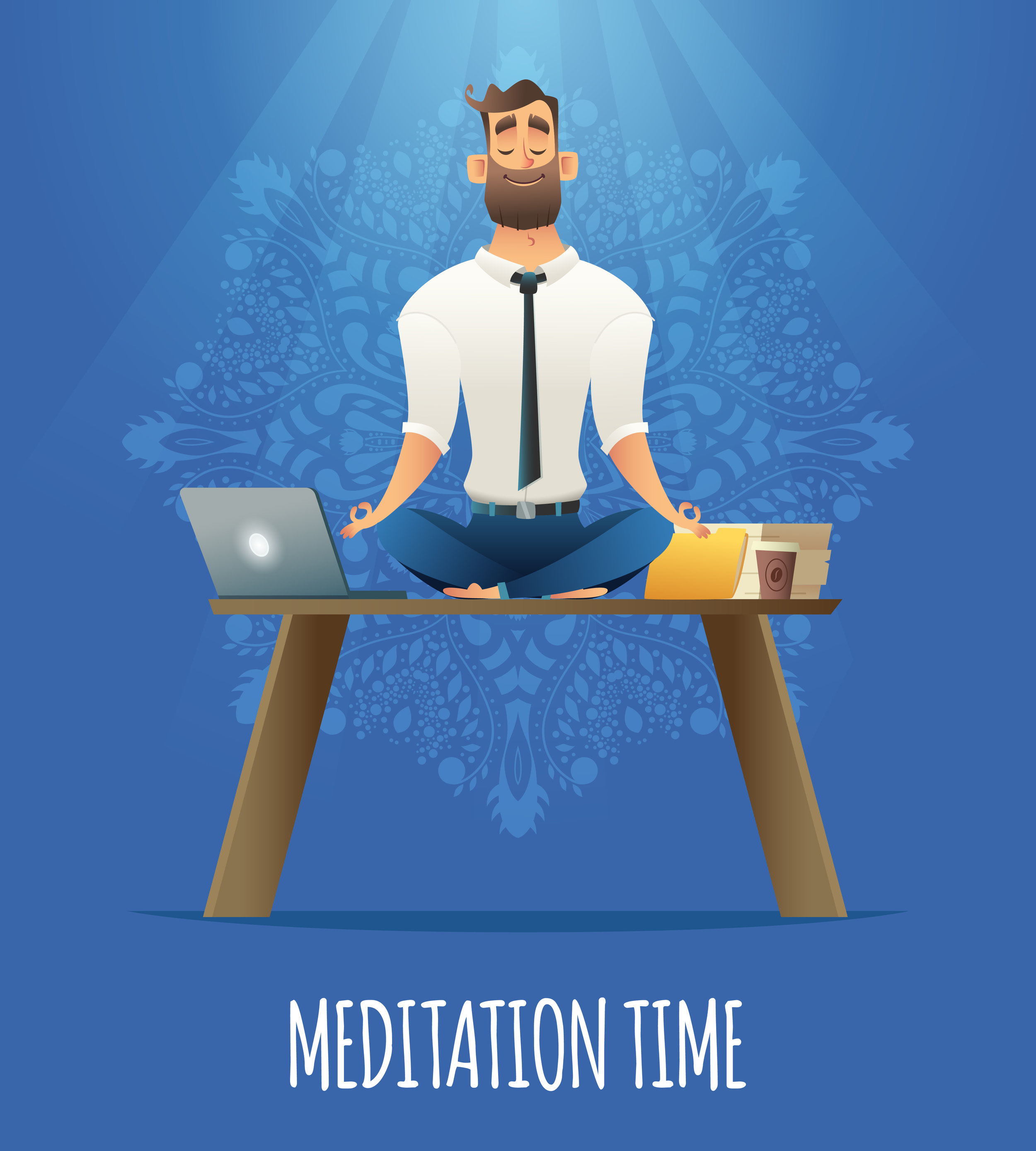“I can’t sit still long enough to meditate.” “My mind is too busy.” “I do plenty of things to relax, I don’t need to meditate.” “I don’t have time to meditate.”
~said every meditator at some point
Why meditate? What’s the point?
We live in a society that never shuts off. No doubt, the creation of the internet has brought much good! Instantaneous connection to individuals across the world, the ability to research and learn anything from the click of a button, innovation, security, creativity, and the list goes on. However, in a virtually boundaryless society, we no longer have time for disconnection and stillness. Throughout the day and night every day, people everywhere are texting, emailing, Googling, asking Alexa’ing, Snap Chatting, Instagramming, and Facetiming. Most of us are connected to our electronic devices when we are physically interacting with other humans as well as when we are alone at home – eating, sitting on the toilet, watching TV, reading, exercising, etc. I used to even sleep with my iPhone like it was my teddy bear. I’d fall asleep in the black hole of the internet, looking at irrelevant Facebook posts, blog posts, or whatever google led me to…
When we are virtually connected 24/7 like this, our mind never gets the chance to shut off and relax. We can’t expect to have a calm mind if we don’t create the space for the mind to be calm. Developing a calm and peaceful mind is a practice, just like strength training. Chiseled biceps don’t appear out of thin air. You must continuously lift the weights to strengthen the muscle. Similarly, you must practice meditating in order to develop the capacity for stillness. Once you’ve strengthened your mind’s capacity to relax and become still during meditation, the skill then becomes transferrable to daily living. You can begin to flex your mind’s “calm muscle” in moments of stress, anxiety, or overstimulation.
Contrary to what a lot of people think, meditation is not about clearing the mind, rather it’s about focusing the mind to allow for freeing the mind of distractions (untruths/hindrances). Some meditations include focusing the mind on a single “object of meditation.” This might be the breath, an imagined image, or a mantra (repeated phrase such as “be happy”). Some individuals find it helpful to maintain a relaxed open eye gaze on a physical object such as a candle flame, an image of a mandala, or a natural setting (i.e. beach, greenery, clouds, water). Your object of meditation can be the same every day or change from day to week/month. It is only natural that when you attempt to focus on your object of meditation, uninvited thoughts and images will come to mind.
Don’t expect to become the Michael Jordan of meditation after your 1st or 100th time of meditating! Rather, acknowledge the uninvited guest (coming from the restless or sleepy mind), thank it for its appearance, and kindly bid its adieu. Another approach is to imagine a fly swatter swatting away every uninvited guest that surfaces or that these guests are like bubbles and they float away. Through practice you will figure out what works best for you. Bottom line is that these uninvited guests will appear whether they were on the VIP guest list or not. Depending on the day and your mood, as little as 15 happy guests might show up to your party, or as many as 500 angry mobsters might rush the field of your mind. It’s not important how many uninvited guests show up, but rather how you deal with each of them. For how long do you entertain each of their shenanigans? Overtime you will become more adept at shifting your focus from the uninvited guest back to your designated object of meditation, which will open the door to insights.
This “focus” is not the end goal of meditation. The focus becomes a gateway to calmness and a higher awareness and insight, less reactivity and better health. Samatha (also called Shamatha depending on the text origin) and Vipassana are two "qualities of mind" to be developed through meditation, 1) Samatha: cultivating calm is the peaceful happiness born of meditation and is performed by focusing our attention on something like the breath, an imagine, a story; 2) Vipassana: insight is the clear understanding of being through meditation and is performed without the focus like in Samatha. It is common to practice Samatha to cultivate the insight for a Vipassana practice.
Learning to meditate doesn’t happen overnight! That’s where the “practice” comes into play! Just as an athlete must regularly practice their sport in order to win a game, YOU must practice the art of “calm” and “insight” in order to become skilled at meditation and reap the benefits.
Proven suggestions to support a meditation practice:
Practice your meditation in the same place at the same time every day. This creates a habitual routine, making the practice easier to stick to. Maybe you sit on a meditation pillow in the corner of your bedroom upon waking up or before bedtime. Perhaps you sit in your car before you walk into the office (assuming this is a safe parking lot). Try taking a mid-morning work break to meditate at your desk or outside. Or possibly regularly attend some meditation classes at Dogwood Studio (7 on the schedule for June and July weekly)! Register HERE! [Jaclyn, Yoga Therapists at Dogwood Studio] I began my own regular meditation practice by taking what I dubbed “bathroom meditation breaks!” During times of high stress in my former role as a hospital social worker, I would escape to the nearest bathroom and sit fully dressed on the porcelain princess to connect for a few minutes with my then favorite mantra “let go.”
Beginning a meditation practice can very simple! Carve out just 5 minutes/day for yourself to sit still to practice steadying the mind. Follow these simple steps to meditate now!
1) Set a soft timer for 5 minutes.
2) Sit comfortably with an erect spine (preferably on a pillow or in a chair).
3) Close your eyes or maintain a relaxed open gaze.
4) Relax your muscles, scanning the body for tension and releasing any holds.
5) Begin focusing on the inhale and exhale of the breath through the nostrils.
6) While maintaining a balanced breath in and out the nostrils, begin to focus the mind on a single object of meditation.
7) Continue efforts to focus your mind on the object of meditation for 5 minutes.
8) Once you’ve completed the meditation, notice how you feel. It may help to jot a few words down after each session [meditation note pad].
Some folks prefer easing into meditation with the help of guided meditations. You can find quick guided meditations on YouTube, podcasts, websites, or through apps such as one of my favorites, insight timer. See this Huffington Post article for a detailed list of meditation resources. Other folks find group meditation to be ideal. Guided and unguided group meditation practices are often offered through yoga studios, meditation centers, Buddhist or Hindu temples, and/or certain wellness groups/institutions.
One of the primary intentions of Dogwood Studio is to create a more accessible and supportive space for meditation within our community. We will offer 30-minute donation-based guided group meditations Monday-Saturday, private individual/group meditation instruction/support, and workshops around the art of meditation.
Join us Saturday June 22nd for our open house weekend, including free classes where you will learn more about meditation and be given the opportunity to practice in a supportive setting. We are also offering 50% off on private session purchases through June 30th and free therapeutic yoga and meditation classes June 17th- June 29th! Click here to register now!
Just with everything else in life, there are many paths to developing a meditation practice. What works for one person may not work for the next. Figure out what works best for you and stick to it! As the renowned “Woodstock Guru” Swami Satchidananda once said, “If you make a vow, no matter what it is, stick to it. Sticking to it is a very difficult thing to do. You will have to face a lot of tests, but be persistent. The ability to persevere will prove that you are the master of your own mind.”
Stay tuned for future blogs including more detail about samatha and vipassana meditation practices, more helpful tips to support your meditation practice, as well as blog posts including “The science behind meditation”! Now go meditate…

